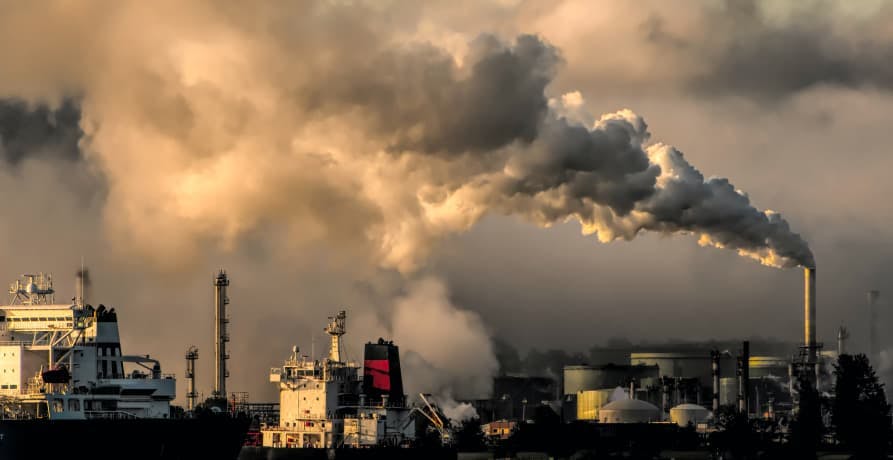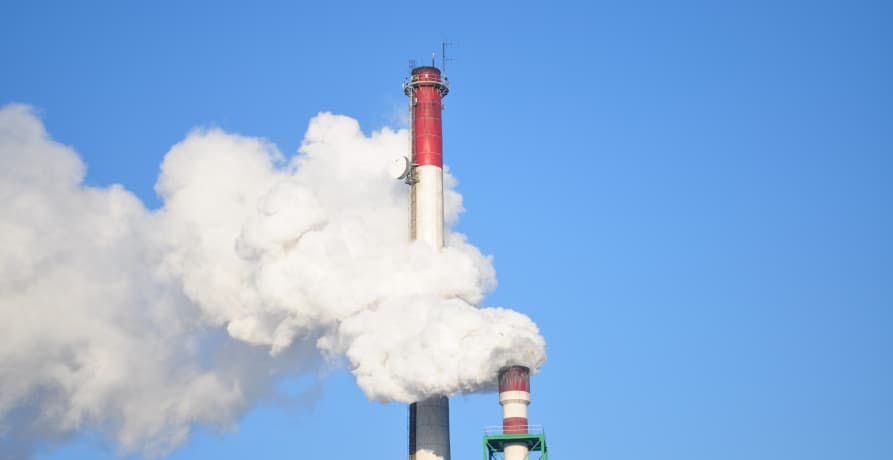ESG / CSR
Industries
The 425 carbon bombs that urgently need to be diffused!



In an era marked by urgent climate concerns, the term "carbon bombs" has emerged as a chilling descriptor of one of the most formidable challenges facing our planet. These 425 carbon bombs, a mix of mammoth oil and gas projects and coal mines scattered globally, stand as ticking time bombs in the race against climate change. If allowed to reach their full operational potential, these projects threaten to unleash an unprecedented amount of carbon dioxide into the atmosphere, exacerbating global warming and pushing our delicate ecological balance to the brink.
As the world grapples with the necessity of transitioning to sustainable energy sources, the immediate need to diffuse these carbon bombs becomes not just a matter of environmental preservation but a pivotal battle for the future of life on Earth.
👉 This article delves into the intricacies of these carbon bombs, exploring their locations, impacts, and the critical steps needed to avert this looming ecological disaster.
What are the 425 carbon bombs?
Breaking Down the Numbers
The term carbon bomb refers to large-scale fossil fuel extraction projects that, if developed to their full capacity, have the potential to release massive amounts of carbon dioxide into the atmosphere, significantly contributing to global warming and climate change. These carbon bombs are composed of:
- 195 oil and gas projects - These include extensive drilling operations, offshore oil rigs, and natural gas extraction sites. Such projects often involve tapping into new oil and gas fields, which leads to the release of significant quantities of carbon dioxide and methane, both potent greenhouse gases.
- 230 coal mines - These are large-scale operations for extracting coal, a fossil fuel that, when burned, releases a high volume of carbon emissions. Coal mining and combustion are among the leading contributors to atmospheric CO2 levels and are therefore a major focus in discussions about climate change mitigation.
As our planet already faces severe environmental challenges, these 425 infrastructures, if fully exploited, could release an astonishing 1,000 gigatons of carbon dioxide over their lifetime. According to experts these potential emissions represent an amount that is four times higher than the global carbon budget needed to limit global warming to +1.5°C above pre-industrial levels!
The Current State of Affairs
The global landscape of these carbon bombs presents a stark reality in the ongoing struggle against climate change. Presently, many of these projects are either in development or already operational contributing significantly to the world's carbon emissions. The International Energy Agency (IEA) has highlighted in its reports that, despite a growing shift towards renewable energy sources, the global demand for oil and gas remains substantial, driven primarily by developing economies seeking to meet their rising energy needs. This continued reliance on fossil fuels poses a significant challenge to achieving the carbon reduction targets set under the Paris Agreement.
In particular, the oil and gas sector, encompassing 195 of these projects, is a major contributor to global greenhouse gas emissions. According to the IEA's oil report, while there is a potential plateau in oil demand in the 2030s, the pace of transition to alternative energy sources is crucial in determining the future trajectory of these emissions.
As for the 230 coal mines, their impact on global emissions cannot be understated. Despite the global push for cleaner energy, coal remains a dominant energy source, especially in regions like Asia where new coal mines continue to be developed to meet rising energy demands. The Global Energy Monitor's 'Global Coal Plant Tracker' provides an insight into the scale of existing and planned coal-based power plants, underlining the immense challenge of phasing out coal to meet climate objectives.
👉 Learn more about the role of fossil fuels in the global energy landscape on our blog.
Where are the carbon bombs located?
These carbon bombs represent some of the world's biggest fossil fuel projects. Their distribution spans across a number of different countries:
- China (141)
- Russia (41)
- Iran (24)
- United States (22)
- Australia (23)
- Qatar (13)
- India (18)
- Iraq (11)
- Canada (12)
- Saudi Arabia (23.5)
For instance, China, leading the count with 141 carbon bomb projects, has been heavily reliant on coal and is rapidly expanding in oil and gas to fuel its massive economic growth. Russia, with its vast natural gas reserves, has 41 projects and is utilising these resources as a major economic driver and a tool for geopolitical influence. Similarly, countries like Iran, the United States, Australia, and Saudi Arabia, each with their unique energy landscapes, have developed numerous projects aligned with their abundant natural resource reserves.
This distribution of these carbon bombs also indicates the varying stages of economic development and energy transition policies in these countries. While some nations are investing heavily in renewable energy (like the United States and Australia), their reliance on existing fossil fuel infrastructure and the profitability of these resources make the transition complex.
In contrast, developing countries such as India and China face the dual challenge of meeting rapidly increasing energy demands while attempting to shift towards more sustainable practices.
The presence of these carbon bombs in these diverse geopolitical contexts highlights the global nature of the climate crisis, underscoring the need for international cooperation in managing and mitigating the impacts of these projects. It's a stark reminder that addressing climate change effectively requires a nuanced understanding of global energy politics, economic development, and the equitable distribution of resources and responsibilities.
👉 Discover why petrostates have become so dependent on oil and gas in our article.

Who is responsible for these carbon bombs?
The responsibility for the 425 climate bombs can be attributed to a variety of actors in the global energy landscape, each playing a significant role in their development and continued operation. Understanding who is behind these projects is crucial for addressing the challenges they present. Let's take a closer look at those responsible for these ticking carbon bombs:
- Major oil, gas, and coal companies - The most direct culprits are the large fossil fuel companies. These corporations are involved in the exploration, extraction, and processing of fossil fuels. They invest heavily in developing new reserves and expanding existing ones, driven by the goal of raising profit and the energy demand. Their operations are at the core of these climate bombs.
- Governments and state-owned enterprises - Many of the largest fossil fuel projects are either directly operated by or in partnership with state-owned enterprises. Governments, particularly those of countries rich in fossil fuel reserves, play a pivotal role in sanctioning and supporting these projects. In some cases, national policies and economic priorities heavily favour the development of these resources, often citing energy security and economic growth as justifications.
- Financial institutions and investors - Banks, investment funds, and private investors provide the capital needed for these large-scale projects. The financial industry's role is crucial as it can either enable or restrict the flow of funds necessary for the development and expansion of these carbon bomb projects. In recent years, there has been growing scrutiny over the role of finance in supporting fossil fuel projects, leading to a push for more sustainable investment practices.
- Consumers and global energy demand - On a broader scale, the global demand for energy plays a significant role. Consumers, industries, and the general population’s reliance on fossil fuels for energy, transportation, and manufacturing drives the continued exploration and exploitation of these resources. As long as there is a high demand for oil, gas, and coal, companies and governments will have incentives to develop carbon bombs.
- Regulatory bodies and international agreements - The regulatory environment and international agreements also influence the development of these projects. Inadequate regulation and lack of enforcement of environmental standards can enable the growth of climate bombs. Conversely, international agreements like the Paris Climate Accord aim to reduce global carbon emissions, which can limit the development of new fossil fuel projects.
In addressing the challenge of carbon bombs, it is essential to consider the roles and responsibilities of these various actors. Effective solutions will likely require coordinated efforts across these groups, including stricter regulations, shifting financial investments toward renewable energies, and reducing global reliance on fossil fuels.

Why is it so hard to transition away from fossil fuels?
The struggle to move away from coal, oil, and gas projects is deeply rooted in a complex web of economic, infrastructural, and geopolitical factors. At the forefront is the issue of profit: fossil fuels have been the backbone of industrial development and economic growth for over a century. Major oil and gas companies, as well as coal-producing nations, have built vast infrastructures and supply chains centred around these resources. This established infrastructure makes a swift transition challenging, as it involves not only the development of new technologies but also a fundamental restructuring of the global energy economy. Furthermore, investments in fossil fuel projects are often locked in for decades, creating a situation where short-term economic interests can overshadow long-term environmental considerations.
Additionally, the dilemma intensifies in the context of developing nations. Many of these countries are experiencing rapid growth and are seeking to improve living standards for their populations, akin to the development trajectories of more industrialised nations. However, they often face constraints in resources and technology to switch to renewable energy quickly. The reliance on affordable and readily available fossil fuels becomes a pragmatic choice for immediate economic development and energy access. These countries contend with the challenge of balancing their right to develop with the global need to reduce carbon emissions.
Addressing the issue of carbon bombs calls for a collaborative approach, where developed countries not only lead the way in transitioning to renewable energy but also support developing nations through technology transfer, financial aid, and investment in sustainable infrastructure. The global nature of climate change necessitates a unified effort that recognises the different capacities and developmental stages of countries, ensuring a just and equitable transition for all.
👉 Read more about the challenge of transitioning away from fossil fuels in our article.

How do we mitigate the damage of these carbon bombs?
Mitigating the damage caused by the 425 carbon bombs requires a multifaceted approach, encompassing a range of strategies aimed at reducing carbon emissions and transitioning to more sustainable energy sources. Here are several key strategies:
Halting funding for new fossil fuel projects
- Divesting from fossil fuels - Encouraging financial institutions, governments, and investors to withdraw their investments in fossil fuel projects. Divestment campaigns can shift funding away from carbon bomb projects towards cleaner alternatives.
- Enforcing stricter financial regulations - Implementing policies that discourage or prohibit financing for new fossil fuel exploration and extraction. This includes revising the lending policies of major banks and financial bodies.
Accelerating the transition from fossil fuels
- Implementing carbon pricing and taxes - Establishing a carbon tax or a cap-and-trade system to internalise the environmental costs of carbon emissions, making renewable energy more competitive.
- Strengthening environmental regulations - Enforcing stricter environmental standards for fossil fuel extraction and use, including tighter emission limits and penalties for non-compliance.
- Reducing fossil fuel subsidies - Cutting back on government subsidies for the fossil fuel industry to level the playing field for renewable energy sources. This shift will encourage investment in cleaner energy and support a more sustainable and eco-friendly energy landscape.
Switching to renewable energy sources
- Investing in renewable infrastructure - Substantially increasing investments in renewable energy technologies like solar, wind, hydroelectric, and geothermal power. This also involves upgrading energy grids to accommodate renewable sources.
- Incentivising renewable energy adoption - Offering subsidies, tax incentives, and financial support for renewable energy projects and for businesses and consumers who adopt renewable energy solutions.
Promoting energy efficiency
- Enhancing efficiency standards: Implementing stringent energy efficiency standards for buildings, vehicles, and industrial processes to reduce overall energy consumption.
- Encouraging behavioural changes - Promoting energy-saving practices among consumers and industries, including the use of energy-efficient appliances and machinery.
Supporting carbon capture and storage (CCS) technologies
- Investing in CCS research - Funding research and development in carbon capture and storage technologies to reduce the amount of CO2 released into the atmosphere from fossil fuel use.
- Implementing CCS in high-emission industries - Applying CCS technologies in industries where emissions are hardest to reduce, such as steel and cement production.
Enhancing global and local policies
- Strengthening international agreements - Participating actively in international climate agreements like the Paris Agreement, and committing to more ambitious national targets for carbon reduction.
- Promoting local initiatives and policies - Encouraging local governments to implement policies that support the transition to renewable energy and reduce reliance on fossil fuels.
Encouraging public awareness and education
- Educational campaigns - Conducting public awareness campaigns about the impacts of climate change and the importance of transitioning to renewable energy.
- Community engagement - Engaging communities in decision-making processes related to energy projects, ensuring their concerns are addressed, and their transition to sustainable practices is supported
Round up
Addressing the issue of the 425 carbon bombs uncovers a significant truth about the current state of our global energy systems and highlights the critical necessity for transformative change. These vast, carbon-intensive projects not only symbolise the challenges we face in curbing climate change but also serve as a call to action for societies worldwide.
The road to mitigating their impact is multifaceted, requiring not just technological innovation and policy shifts but also a fundamental change in how we perceive and utilise energy. It's about reimagining our relationship with the planet, transitioning from an era of exploitation to one of sustainable coexistence.
The task ahead is challenging, yet it's essential. It demands collective resolve and swift action to ensure a habitable, thriving Earth for future generations.
What about Greenly?
At Greenly we can help you to assess your company’s carbon footprint, and then give you the tools you need to cut down on emissions. Why not request a free demo with one of our experts - no obligation or commitment required.
If reading this article has inspired you to consider your company’s own carbon footprint, Greenly can help. Learn more about Greenly’s carbon management platform here.



